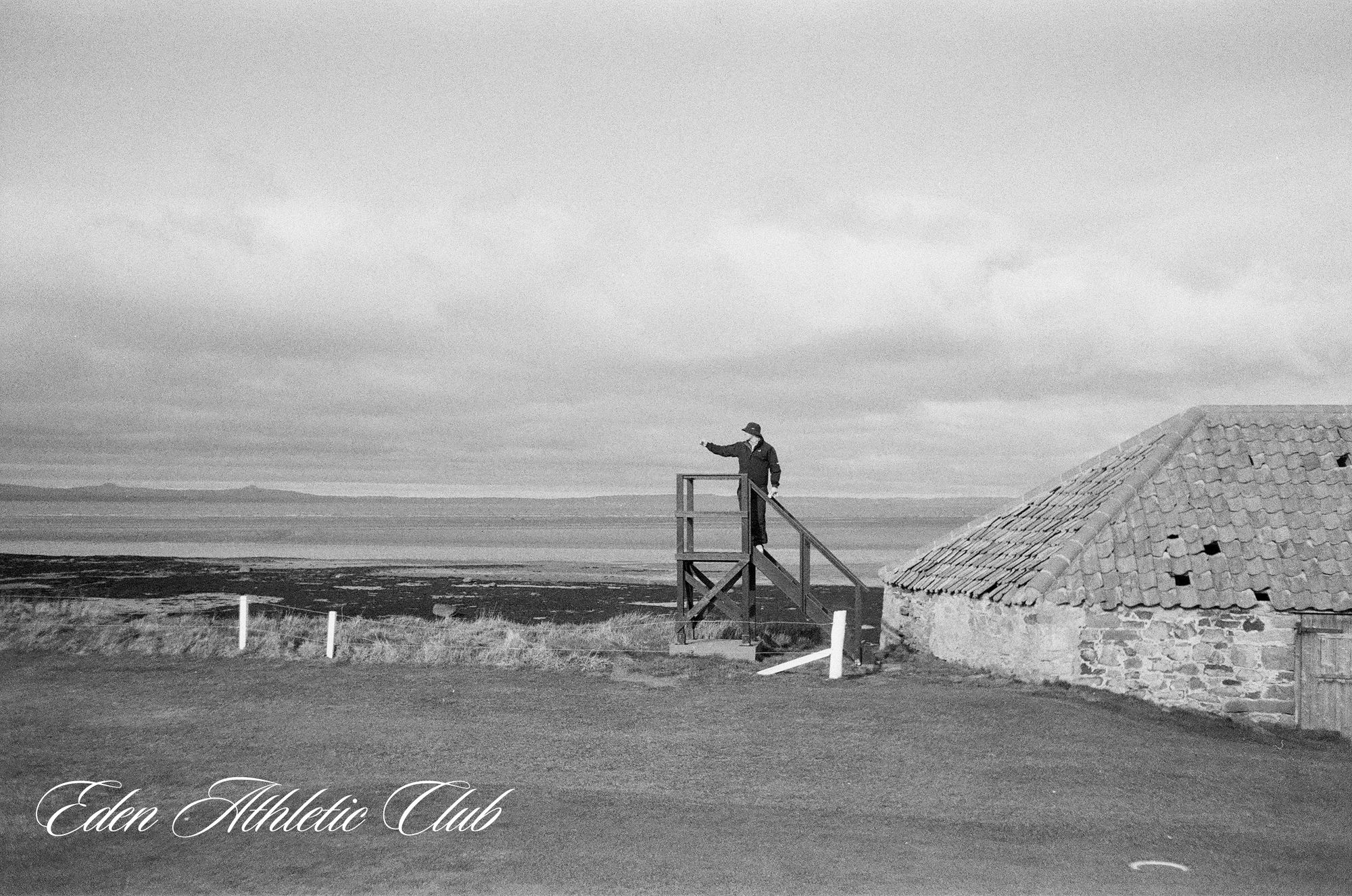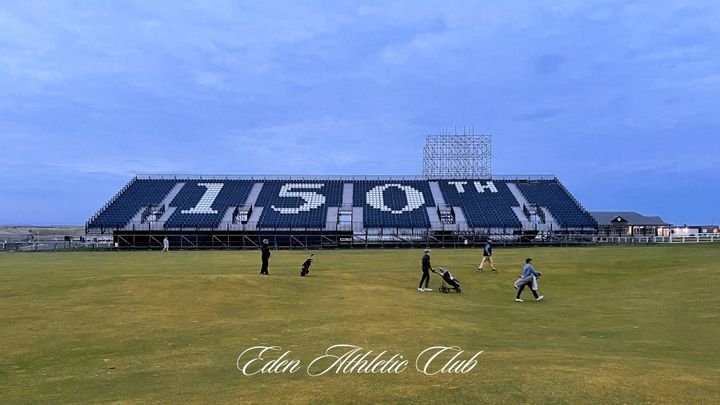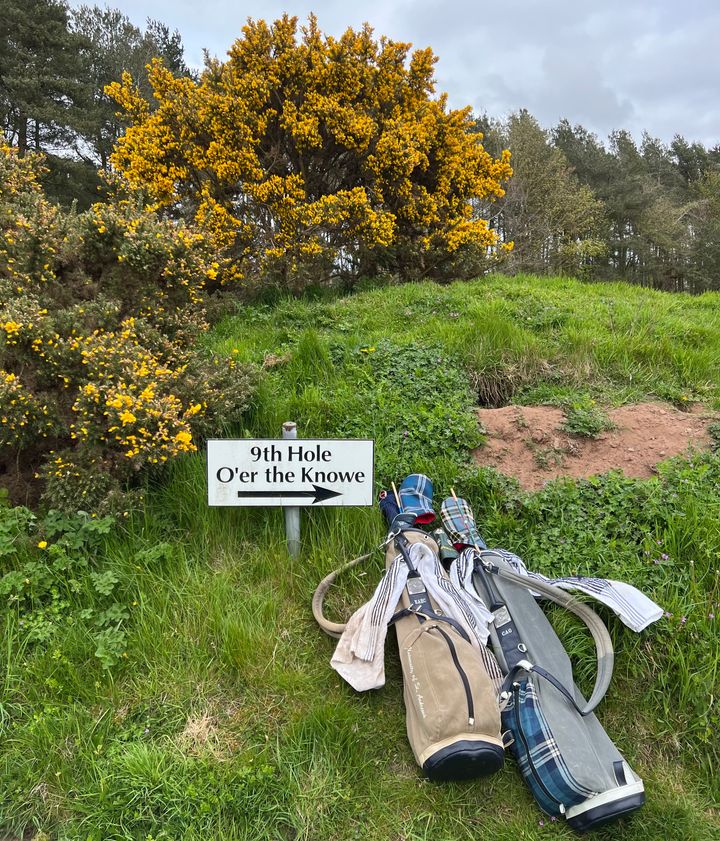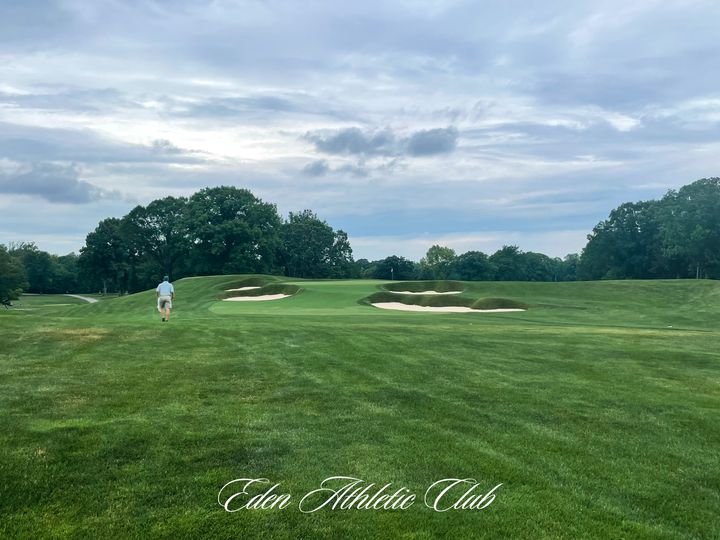On Ducks, Putts and Pints: a Night in East Lothian

By Ed Chambler
The trip was a spontaneous one. In the span of a few hours, what had started as a flippant suggestion had turned into a full-bore reality. The accommodation booked, the course in our sights. We loaded up my Ford Fiesta with three golf bags, a case of beer and a bottle of scotch. We were on the road by late afternoon with East Lothian but our humble destination.

It always feels slightly sacrilegious driving out of St Andrews in pursuit of faraway golf. It’s something like leaving behind a treasured lover in search of a new experience. Maybe you learn something, and often you do. But it is always there to greet you again, with open arms, a gentle smile, and a sly enticement. Admittedly, this is strange analogy to be applying to a golf course, but you get my drift. As both a student of the university and a discipled monk of the links, there is an argument to be made that no one on Earth has it better. The town rewards its golfing community with an access to world class, historic golf that is found literally nowhere else. But a mixture of academic burnout and bumpkin claustrophobia had inspired an adventurous attitude in us, so we hit the road for a night away to properly rekindle, rejuvenate and recalibrate. Perhaps this is the very function of golf.
Our drive southward was, on the whole, a rather tense endeavour flavoured with the keenest of excitements for what our trip had in store. Two of our party of three, me included, had never visited East Lothian, let alone golfed on its hallowed turf before, so you can imagine the eager, child-like conversations during the car ride. A gloomy late February afternoon met us as we crossed the Firth of Forth on the Queensferry Crossing. I distinctly recall listening to Steely Dan as we drove over the bridge. We could almost see our destination in the distance to the left and the anticipation was duly building. Past Edinburgh, the landscape began to change. The rolling farmland was starting to show patches of gorse. The uniform grass was slowly transforming itself into wispy dune-land as we approached our Scotland’s so called golf coast. As we turned off the main road toward Cockensie and Seton, a seemingly never-ending carpet of golfing landscape showed itself, crowned in the far distance by the grand hillocks of Gullane. It was light enough to appreciate what was in front of us, dark enough to keep some of its beauty well hidden. We were going to have to earn it tomorrow.
Eager to catch the last glimpse of daylight, we drove past the quaint village of Aberlady, where we were going to spend the night, toward North Berwick, Muirfield and Renaissance. As we made our way along the coastal road, something caught our eye. We parked the car in earnest to confirm our suspicions, and there it was. Outside the famed Old Clubhouse of Gullane lay a small patch of links turf which looked like, and it was, a public park. A man walking his dog in the early evening stillness nodded welcomingly at us. Beyond a small wooden shack, which looked very much like a starters hut, were the handful of pins and tee boxes strewn around the open area which had caught our eye. It dawned on us that it was a small children’s par three course. Only in Scotland would you find such a thing outside an ancient clubhouse.
A few quick glances were exchanged between our party, each with the same very fervent intention. We each ran back to the car to grab a wedge, a golf ball, and a can of beer. There’s something special about spontaneous golf which is hard to capture in writing. There was nothing overly special about the array of short holes which lay before us, nor the challenge that each presented. But the excitement to play the magical little patch of links turf we had stumbled upon was profound. In the fading winter evening light, we played until we could play no longer. I don’t recall who won, or if we even kept score. Tis the way truly good golf is often remembered.
Overlooking the wee course lay the imposing Old Clubhouse. Established in 1890 as the home of Gullane Golf Club, the building stands large looking out to sea with a sense of understated grandeur. It is now functioning as a rather delightful pub and restaurant, which we swiftly settled into after our impromptu ‘round’. The walls inside the clubhouse were adorned with miscellaneous golf memorabilia and sepia photographs of a seemingly long-lost golfing era. Wooden brassies, mashies and niblicks hung above our head as we sat down to our pints of Guinness. The bar opposite was no different. Trinkets, busts, and posters complimented the selection of bottles which lined the shelves with a carefree sense of nostalgia. We drank our beer looking out the window onto the now bitterly dark landscape that lay outside. I don’t think any of us could quite believe how our adventure was unfolding.

Shortly after, we got back on the road back toward Aberlady. I had heard about the famed Ducks Inn some years before when I read an article, similar to this one, about a trip to East Lothian. If I recall correctly, Erik Anders Lang’s jovial 'official unofficial guide to Scotland' YouTube series first put me on the scent in 2019. It seemed like a warm looking establishment with the jolly charm of mediaeval tavern, if only the tavern also doubled as a golfing pilgrimage, rite of passage and halfway house you can sleep in. It is located at the heart of East Lothian, ideally placed for rounds at all the major courses on that stretch of coastal linksland. We checked into our family room and headed downstairs for supper in the hallowed bar area. Deep sofas, crimson red wallpaper and dark wooden furniture met us as we tiredly stumbled through the saloon doors. The smell of delicious home cooked food and proper ale was distinct and unmissable. We were very happy indeed.

The Ducks Inn is a very unique place with some very unique traditions. Late in the evening, a long wooden track emerges from a back room along with a custom-made pivot. Together, they make a sort of seesaw contraption that rests on the ground some 8 feet from the bar. I am unaware of the full story, but according to myth and legend, some putting games were played once upon a late hour in the bar which became the basis for the game now played on this seesaw device. The aim of the game is to putt a ball off one of the bar stools so that it comes to rest at the end of the seesaw. This requires a committed stroke of the ball to produce the perfect pace. Otherwise, it comes tumbling back down the ramp back to your feet. It is an open question to those who take regular golf trips how late one should stay up enjoying the festivities before a golf round. For the light of heart, a very conservative response might follow. For those more daring, as we found ourselves that evening, it is a far more courageous answer. We continued to play the putting game long into the night. The pints flowed, and the putts rolled. Some looked extremely promising as they climbed the ramp to its apex, while others had on an errant trajectory missed the ramp by an embarrassing amount. Despite our lack of success in the putting game, we had a night I will not soon forget.

At the end of our trials and tribulations, we stumbled upon the owner of the Ducks Inn, Mr Malcolm Duck. A rather illusive and mysterious character, he is a sage of both Scottish golf and its heritage. We spoke with him for a while about his favourite courses and various golfing adventures, all of which rich with lessons and teachings. At the end of our conversation, we let him know our plans to play Kilspindie the following afternoon, to which he affirmed our choice of course with a rather profound statement. He ended by saying if he were to have one last golf round in Scotland, it would be at Kilspindie. We went to bed fully satiated.
We awoke the next morning with heavy heads to a cloudy sky. Our breakfast conversations had an excitable tone about them as our golfing minds were slowly waking up. Kilspindie demanded our full and careful attention. Measuring only 5500 yards from the tips on the scorecard, it might seem, at first glance, like an easier challenge for the adept golfer. It was, however, a challenge unlike any other I’ve faced playing this game.
Our tee time wasn’t until 12:30, but we arrived in eager anticipation for balls in the air. The driveway winds its way along the shore next to some holes of the adjoining golf club. There is a wooded area near the beach which swallows the road almost entirely, through which, after a further short drive, the revered clubhouse emerges. Set back from the shoreline and protected by the imposing trees above, upon first glance it has a true sense of sanctuary. We parked the car and made our way along the path to the pro shop. I’d never really put much time into considering the effect of clubhouse placement, but since my visit to Kilspindie, I have thought about it considerably. From the vantage point of the car park, the clubhouse blocks the entire view of the sea and its preceding linksland, which adds significantly to the sense of reveal when you turn the corner of the clubhouse toward the first tee box. To our immediate left the 17th fairway climbs a hill and disappears over an ancient wall. Adjacently, the 18th descends from the above plateau to an understated green next to the westerly side of the clubhouse, casting a threatening energy for the golf we had left to play on the way home.
The 1st hole at Kilspindie is a short par three to a raised green some 158 yards away. The wind was blowing hard that afternoon, so I struck a comfortable 9 iron which found the left edge of the putting surface. And so our round began. The front nine takes you out along the shoreline in spectacular fashion. I don’t know whether it was by conscious design or a subconscious magnetism that it is routed in such a fashion. There is an intuition that golf course architects should endeavour to lead the golfer away from the main attraction to allow for a grand reveal later on in the round. Perhaps this intuition is a too contemporary.

Founded in 1867, Kilspindie is the 35th oldest golf clubs in the world, and it was Musselburgh’s famed Willie Park Jr who was among the early architects of its current layout. The choice to take the golfer straight ‘out to sea’, as it were, sets the tone for a truly magical round. Straight out of the gates, the golfer is faced with the only par 5 on the course in the 2nd hole which, weather permitting, is comfortably reachable in two committed strokes. The following holes are a succession of fascinating short par 4’s which weave their way out toward the end of the linksland at the headland of Aberlady bay. Across the stretch of water, you can see much of the southern coastline of the Kingdom of Fife. Toward the west you can make out the industrial buildings of Edinburgh and the Queensferry bridges beyond. Somehow our trip was making its way full circle.



Kilspindie has no care for length, and it need not. It’s challenge is found is other nuances which demand more of the modern golfer than we’re typically used to. Indeed, seven of the thirteen par 4’s measure less than 300 yards, and only 3 of the remaining six are over 400. To some, this might seem laughable and infantile. If you are one of these people, you are severely missing the point. In bygone eras, where golf was played with a feathery golf ball and mashies, like the ones we saw in the Old Clubhouse, there was far more involved in playing such holes. Interestingly, despite our supposed increases in both length and accuracy, we still face very similar problems today. The greens at Kilspindie are heavily guarded by small pot bunkers and mounded swales. If you are valiant enough to attempt to drive the reachable greens, the returns you receive on investment are meagre at best. The strategic player will punch a low flighted iron to the widest part of the fairway with clear access to the green. Sometimes these shots are only 180 yards from the tee box. Kilspindie explicitly demands a player to leave his ego in the car park and think his way around its undulating turf. In my humble opinion, golf such as this is as fun as it gets.
The back nine starts in a similar fashion to the front, with a short par 3 to a lowered green on the outer western edge of the property. A seemingly straight forward tee shot with no obvious trouble is thwarted by sheer confusion caused by the swirling wind above. To the right of the plateaued green stands a enticing wall. As imposing as it sounds, it is eager and ready to eat up any errant golf balls. The short par 4 eleventh and twelfth took us back toward the centre of the links toward the final par 3 of the round, with staggering views back over the course to the left. We played some inspired golf on the way home tackling the short par fours like seasoned veterans of the ancient golf course.
Finally, we arrived at the tee box of the 18th. From our earlier assessment as we arrived it looked like a daunting but straightforward question, asking for a well-placed tee ball to the left of the diagonal wall which cuts across the centre of the fairway. From the tee box however, it became clear how hard a question this was. The fairway on the other side of the wall is invisible from the box and a committed stroke requires a significant level of courage. The approach shot to the final green, with the clubhouse looming dormant behind, was one of the more special shots I’ve played in my golfing career. Despite its short length, there was a tangible sigh of relief when we each found the putting surface on the last. We could finally relax after an inspiring afternoon of precise iron play, strategic planning, and ego checks. Kilspindie is like a time machine in this way. We might think we hit it further, straighter, and maybe truer, than old Willie Park and his contemporaries in the late 1800’s, but when tested on an equal playing field, no pun intended, there isn’t that much difference. We all still face the same bunkers, the same hazards, and the same daunting lines off the tee. Perhaps to different degrees or in different capacities, but the fact still remains. It's funny that.


Golf trips need not be weeklong. In fact, sometimes a single night is all you need. Our 24 hours in East Lothian, February 2023, was all we needed.

Written and shot by Ed Chambler




